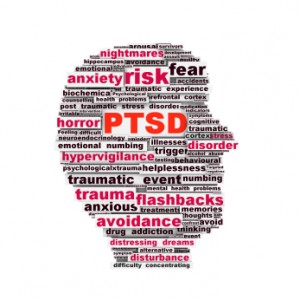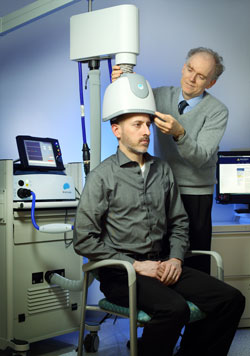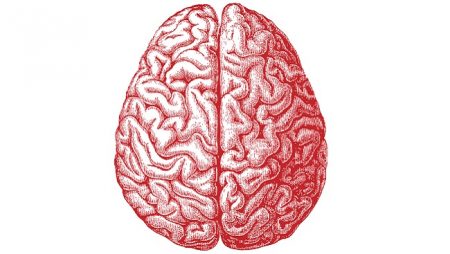Dietary Supplements for Autism: Up-to-Date Research
A 2017 review article by Yong-Jiang Li and colleagues in the journal Frontiers in Psychiatry describes the current research on dietary supplements that may help improve symptoms of autism spectrum disorder.
Some of the most promising research was on vitamin D, folinic acid, and sulforaphane. Methyl B12 and digestive enzyme therapy had some positive effects, while gluten- and casein-free diets and omega-3 fatty acids did not seem to help improve autism symptoms.
Vitamin D
Li and colleagues described a randomized, controlled trial of vitamin D in 109 children with autism aged 3 to 10 years. The experimental group received doses of 300 IU/kg of body weight/day, not exceeding 5000 IU/day. By the end of the four-month study, vitamin D levels had significantly increased in the experimental group compared to the control group. Those who received vitamin D also showed significant improvement on all ratings of autism symptoms, which included general scales of autism symptoms and more specialized checklists that capture aberrant behavior and social responsiveness.
Folinic Acid
The review article also described a randomized double-blind placebo-controlled trial of folinic acid in 48 children with autism spectrum disorder and language impairment. Participants received high-dose folinic acid (2 mg/kg/day) or placebo for 12 weeks. Those who received folinic acid, a form of folic acid that can readily be used by the body, showed significant improvements in verbal communication and core autism symptoms compared to those who received placebo. Participants who tested positive for folate receptor alpha autoantibodies (FRAA), which disrupt the transportation of folate across the blood-brain barrier and are common in autism, showed greater improvements from taking folinic acid than those without this abnormality.
Sulforaphane
Sulforaphane is a phytochemical derived from cruciferous vegetables. It can create metabolic effects that resemble those of a fever, which can improve behavioral symptoms of autism. Sulforaphane also fights oxidative stress, inflammation, and DNA damage, which may play roles in autism. Li and colleagues described the first double-blind, placebo-controlled trial of sulforaphane treatment in 29 boys aged 13 to 17 years. The boys who received sulforaphane showed significant improvement in autism-related behavior, especially social interaction and communication, after 18 weeks compared to those who received placebo. Sulforaphane has low toxicity and is well tolerated. Read more
Successful Trial of N-Acetylcysteine for Veterans with PTSD and Substance Abuse
 The antioxidant N-acetylcysteine (NAC) can improve a number of habit-related conditions, such as substance use disorders, gambling, and compulsive hair-pulling. It also aids in the treatment of depression and obsessive-compulsive disorder (OCD). A 2016 study by Susie E. Back and colleagues in the Journal of Clinical Psychiatry found that NAC can also improve symptoms of post-traumatic stress disorder (PTSD) in veterans who also had substance use disorders.
The antioxidant N-acetylcysteine (NAC) can improve a number of habit-related conditions, such as substance use disorders, gambling, and compulsive hair-pulling. It also aids in the treatment of depression and obsessive-compulsive disorder (OCD). A 2016 study by Susie E. Back and colleagues in the Journal of Clinical Psychiatry found that NAC can also improve symptoms of post-traumatic stress disorder (PTSD) in veterans who also had substance use disorders.
In the pilot study of 35 veterans, participants were randomized to receive an 8-week course of NAC (2,400 mg/day) or placebo, plus cognitive-behavioral therapy targeting their substance use disorder. PTSD and substance use disorders have some overlapping neurobiological features, such as impaired prefrontal cortex regulation of basal ganglia circuitry.
At the end of the 8-week trial, those veterans who received NAC showed improvement in PTSD symptoms, substance cravings, and depression compared to those who received placebo. Substance use was similar and low among both groups. Side effects were minimal.
While these results were preliminary, they suggest that NAC could treat both PTSD and substance use disorders, which often occur together. Larger studies are expected to follow.
Editor’s Note: These preliminary data add to the evidence that NAC has remarkably wide utility in addictions (cocaine, alcohol, nicotine, and marijuana), habits (including OCD, trichotillomania/hair-pulling, nail biting, skin-picking, and cutting), depression and anxiety in bipolar disorder and negative symptoms in schizophrenia.
Different Types of Trauma Affect Brain Volume Differently
Post-traumatic stress disorder (PTSD) has been associated with decreased volume of gray matter in the cortex. Research by Linghui Meng and colleagues has revealed that the specific types of trauma that precede PTSD affect gray matter volume differently.
At the 2016 meeting of the Society for Neuroscience, Meng reported that PTSD from accidents, natural disasters, and combat led to different patterns of gray matter loss. PTSD from accidents was associated with gray matter reductions in the bilateral anterior cingulate cortex (ACC) and medial prefrontal cortex (mPFC). PTSD from natural disasters was linked to gray matter reductions in the mPFC and ACC, plus the amygdala and left hippocampus. PTSD from combat reduced gray matter volume in the left striatum, the left insula, and the left middle temporal gyrus.
Meng and colleagues also found that severity of PTSD was linked to the severity of gray matter reductions in the bilateral ACC and the mPFC.
In a 2016 article in the journal Scientific Reports, Meng and colleagues reported that single-incident traumas were associated with gray matter loss in the bilateral mPFC, the ACC, insula, striatum, left hippocampus, and the amygdala, while prolonged or recurrent traumas were linked to gray matter loss in the left insula, striatum, amygdala, and middle temporal gyrus.
Steroid Dexamethasone Facilitates Fear Extinction
 A 2017 article by Vasiliki Michopoulos and colleagues in the journal Psychoendocrinology reports that the potent steroid dexamethasone reduced the fear-potentiated startle response in patients with post-traumatic stress disorder (PTSD) but not in healthy controls. Dexamethasone acts on glucocorticoid receptors to suppress the body’s secretion of cortisol.
A 2017 article by Vasiliki Michopoulos and colleagues in the journal Psychoendocrinology reports that the potent steroid dexamethasone reduced the fear-potentiated startle response in patients with post-traumatic stress disorder (PTSD) but not in healthy controls. Dexamethasone acts on glucocorticoid receptors to suppress the body’s secretion of cortisol.
In the study, participants both with and without PTSD were taught to associate a picture of a blue square or a purple triangle with an uncomfortable short blast of air to the larynx (voicebox) and a loud burst of broadband noise in the participants’ headphones.
Some participants were given a placebo the night before the study, while others received a 0.5 mg dose of dexamethasone. Those who received dexamethasone the night before the study acquired a startle response to the blue square or purple triangle as much as other participants.
People without PTSD were easily able to eliminate their fear of the visual symbol when it was no longer linked to the noise and the blast of air, regardless of whether they had taken dexamethasone. However, among those with PTSD, only those who received dexamethasone were able to eliminate this fear-potentiated startle response and properly discriminate between safe and unsafe signals. People with PTSD who received the placebo maintained the fearful response to the blue square or purple triangle and startled in response to safe symbols.
People with PTSD may have difficulty learning to inhibit their fearful responses to stimuli that are no longer dangerous. In this study, the patients with PTSD continued to startle even after repeated presentations of the visual symbol without any accompanying air blast, while the controls showed excellent extinction of the response. After dexamethasone, but not placebo, patients with PTSD were just as successful in extinguishing the fear potentiated startle response as the controls. The authors conclude that dexamethasone could help facilitate extinction-based interventions used in PTSD, such as exposure therapy delivered during cognitive behavioral therapy or virtual reality exposure therapy.
Antibiotic Doxycycline May Block PTSD Symptoms
 A 2017 proof-of-concept study suggests that the antibiotic doxycycline can block the formation of negative thoughts and fear memories, perhaps offering a new way to treat or prevent post-traumatic stress disorder (PTSD).
A 2017 proof-of-concept study suggests that the antibiotic doxycycline can block the formation of negative thoughts and fear memories, perhaps offering a new way to treat or prevent post-traumatic stress disorder (PTSD).
In the study by Dominik R. Bach in the journal Molecular Psychiatry, healthy adults who received doxycycline had a lower fear response to fearful stimuli compared to healthy adults who received a placebo. The 76 participants received either doxycycline or placebo and then were taught to associate a color with an electric shock. Later, they were exposed to the color accompanied by a loud sound (but no shock), and their startle response was measured by tracking eye blinks, an instinctive response to sudden threats. Bach and colleagues found that the fear response was 60% lower in those participants who received doxycycline, suggesting that the antibiotic disrupted the fear memory linking the color to a threat.
The theory is based on evidence that doxycycline can inhibit metalloproteinase enzymes, which are involved in memory formation.
While in the study doxycycline was delivered before the fearful event occurred, there is hope that the antibiotic could also do some good after the fact. There is growing evidence that actively recalling a traumatic event can open a ‘memory reconsolidation window’ during which emotions associated with that event are open to change. Bach and colleagues hope to follow up with studies involving this reconsolidation window.
Another line of research is exploring how pain medications may reduce the emotional power of traumatic memories, because intense pain strengthens memory consolidation.
Revising Traumatic Memories in the Reconsolidation Window
 We have previously described in the BNN how therapies can take advantage of the memory reconsolidation window to reduce the power of traumatic memories. Five minutes to one hour following active emotional recall of a traumatic event, a ‘window’ opens during which therapies can revise or extinguish the traumatic memory. A 2017 article by our Editor-in-Chief Robert M. Post and Robert Kegan in the journal Psychiatric Research describes how the reconsolidation window could theoretically be used to prevent recurring depressive episodes.
We have previously described in the BNN how therapies can take advantage of the memory reconsolidation window to reduce the power of traumatic memories. Five minutes to one hour following active emotional recall of a traumatic event, a ‘window’ opens during which therapies can revise or extinguish the traumatic memory. A 2017 article by our Editor-in-Chief Robert M. Post and Robert Kegan in the journal Psychiatric Research describes how the reconsolidation window could theoretically be used to prevent recurring depressive episodes.
The theory is based on the idea that depressive episodes initially stem from stressors, but eventually become ingrained in the brain’s habit memory system. Cognitive behavioral therapy during the memory reconsolidation window might be a good way to disrupt these habit memories.
The memory reconsolidation window has already been used successfully to reduce traumatic memories and even to reduce heroin and cocaine cravings in addiction. The idea in changing traumatic memories, in the words of researcher Göran Högberg in a 2011 article in the journal Psychology Research in Behavior Management, is to “change a reliving intruding memory into a more distant episodic memory.” Post and Kegan suggest that work in depression would have a similar goal, to rework the triggering experience and render the depressive experience “less harsh, severe, [and] self-defeating (guilt-inducing).”
In exploring this new therapeutic approach, Post and Kegan suggest that it might be best to begin with patients whose depressive episodes are triggered by stressors.
The patient would be encouraged to recall the memory of the particular stressor and any emotions related to it. Then they would be prompted to reframe the memory, either by recognizing adaptive aspects of their response, focusing on their youth at the time of the stressor in the case of childhood memories, addressing any guilt the patient may feel, or other techniques used in trauma therapy. Evoking positive feelings during this period via relaxation exercises would be another useful practice.
In addition to targeting stressors that precede depression, the stress of the depressive experience itself could be a target of reframing during the reconsolidation window.
Questions remain, such as whether to target early or more recent memories, and whether this technique would be as useful in reducing manic episodes. Patient characteristics might also affect the success of this type of therapeutic intervention.
Post and Kegan also address how the therapy might be used in different stages of illness, and how it might be combined with other therapies, such as medications or procedures such as repeated transcranial magnetic stimulation (rTMS).
Three Experts’ Different Approaches to Treating PTSD in Veterans
 In the BNN we have previously described some experts’ preferred treatment algorithms for patients with treatment-resistant post-traumatic stress disorder (PTSD), which is often complicated by traumatic brain injury (TBI). In this article, we update and expand upon these expert views.
In the BNN we have previously described some experts’ preferred treatment algorithms for patients with treatment-resistant post-traumatic stress disorder (PTSD), which is often complicated by traumatic brain injury (TBI). In this article, we update and expand upon these expert views.
David Bakish has worked as Medical Director at the Ottawa Psychopharmacology Clinic and is a former professor of psychiatry at the University of Ottawa in Ottawa, Ontario. In addition, he works with the Canadian military seeing patients with PTSD, substance abuse, and traumatic brain injuries. He uses a symptom-driven approach to PTSD, including 6 to 7 targeted medications added in sequence.
Albert Sattin is a professor of psychiatry and biobehavioral sciences at UCLA, belongs to their Brain Research Institute, and is affiliated with both the Ronald Reagan UCLA Medical Center and the Veterans Affairs Greater Los Angeles Healthcare System. He prefers to treat PTSD with a three-part combination of the blood pressure–lowering drug prazosin, a selective serotonin reuptake inhibitor (SSRI) antidepressant, and the atypical antidepressant mirtazapine.
Murray Raskind pioneered placebo-controlled studies of prazosin for PTSD and served as director of the Veterans Affairs Puget Sound Health Care System Mental Health Service, in addition to serving in the Department of Psychiatry and Behavioral Sciences at the University of Washington School of Medicine. Raskind’s approach to PTSD includes prazosin, the tricyclic antidepressant amitriptyline, and if needed for sleep, the sedative zolpidem.
Only SSRIs are approved by the US Food and Drug Administration (FDA) for the treatment of PTSD, but these on their own are rarely sufficient to handle the insomnia and other symptoms that accompany PTSD. Exposure therapy, in which patients are gradually led to approach trauma-related memories, feelings, and situations they previously avoided, is the most recommended type of therapy, but it too is often insufficient to treat all the complexities of the illness. Read on for more on each doctor’s approach to treating PTSD. Read more
Deep TMS May Improve Treatment-Resistant Bipolar Depression
 Deep transcranial magnetic stimulation (dTMS) is a non-invasive treatment that has been shown to be effective in unipolar depression. It consists of a helmet fitted to the head, which uses magnetic coils to create an electric field in a desired brain region.
Deep transcranial magnetic stimulation (dTMS) is a non-invasive treatment that has been shown to be effective in unipolar depression. It consists of a helmet fitted to the head, which uses magnetic coils to create an electric field in a desired brain region.
A 2017 double-blind randomized study by Diego F. Taveres and colleagues in the journal Neuropsychopharmacology found that 20 sessions of dTMS targeting the left dorsolateral prefrontal cortex produced greater improvement in bipolar depression over 4 weeks of treatment than the same number of sham sessions in which participants wore a helmet that delivered similar sounds and scalp sensations without the electrical effects to the brain. The participants had treatment-resistant bipolar depression that was being treated with medication.
However, dTMS’ effects were not significantly different from those of the sham over four additional weeks of follow-up, nor were remission rates significantly different across the two groups. Out of 50 participants, seven dropped out of the study—two from the sham group, and five from the active dTMS group. But there were no occasions on which a participant switched into mania following treatment.
This study suggests that dTMS has the potential to more rapidly improve treatment-resistant bipolar depression as well as unipolar depression.
Brain Scans Differentiate Suicidal from Non-Suicidal Patients with Bipolar Disorder
 People with bipolar disorder are at high risk for suicidal behavior beginning in adolescence and young adulthood. A 2017 study by Jennifer A. Y. Johnston and colleagues in the American Journal of Psychiatry uses several brain-scanning techniques to identify neurobiological features associated with suicidal behavior in people with bipolar disorder compared to people with bipolar disorder who have never attempted suicide. Clarifying which neural systems are involved in suicidal behavior may allow for better prevention efforts.
People with bipolar disorder are at high risk for suicidal behavior beginning in adolescence and young adulthood. A 2017 study by Jennifer A. Y. Johnston and colleagues in the American Journal of Psychiatry uses several brain-scanning techniques to identify neurobiological features associated with suicidal behavior in people with bipolar disorder compared to people with bipolar disorder who have never attempted suicide. Clarifying which neural systems are involved in suicidal behavior may allow for better prevention efforts.
The study included 26 participants who had attempted suicide and 42 who had not. Johnston and colleagues used structural, diffusion tensor, and functional magnetic resonance imaging (MRI) techniques to identify differences in the brains of attempters and non-attempters.
Compared to those who had never attempted suicide, those who had exhibited reductions in gray matter volume in the orbitofrontal cortex, hippocampus, and cerebellum. They also had reduced white matter integrity in the uncinate fasciculus, ventral frontal, and right cerebellum regions. In addition, attempters had reduced functional connectivity between the amygdala and the left ventral and right rostral prefrontal cortex. Better right rostral prefrontal connectivity was associated with less suicidal ideation, while better connectivity of the left ventral prefrontal area was linked to less lethal suicide attempts.
Chronic Fatigue Linked to Low Metabolism
A 2016 article in the journal PNAS suggests that people with chronic fatigue syndrome, also known as myalgic encephalopathy, share a low metabolic profile.
In the study, researcher Robert K. Naviaux and colleagues measured 612 different metabolites in 63 metabolic pathways. They found abnormalities in 20 of these pathways in people with chronic fatigue. Eighty percent of the abnormal measurements were low.
The low metabolic profile resembled a stage of development some worm larvae go through when environmental conditions are harsh. The phase, called dauer, can be brought on by harsh temperatures, low food supply, or pheromones that indicate high population density. It resembles hibernation in some ways, including changes to mitochondrial function. Dauer allows larvae to live for 4 months rather than their normal lifespan of 3 weeks. They can resume normal development when conditions improve.
The authors suggest that chronic fatigue is a metabolic response to environmental stress, and hope to clarify the link between mitochondrial function and the illness.




